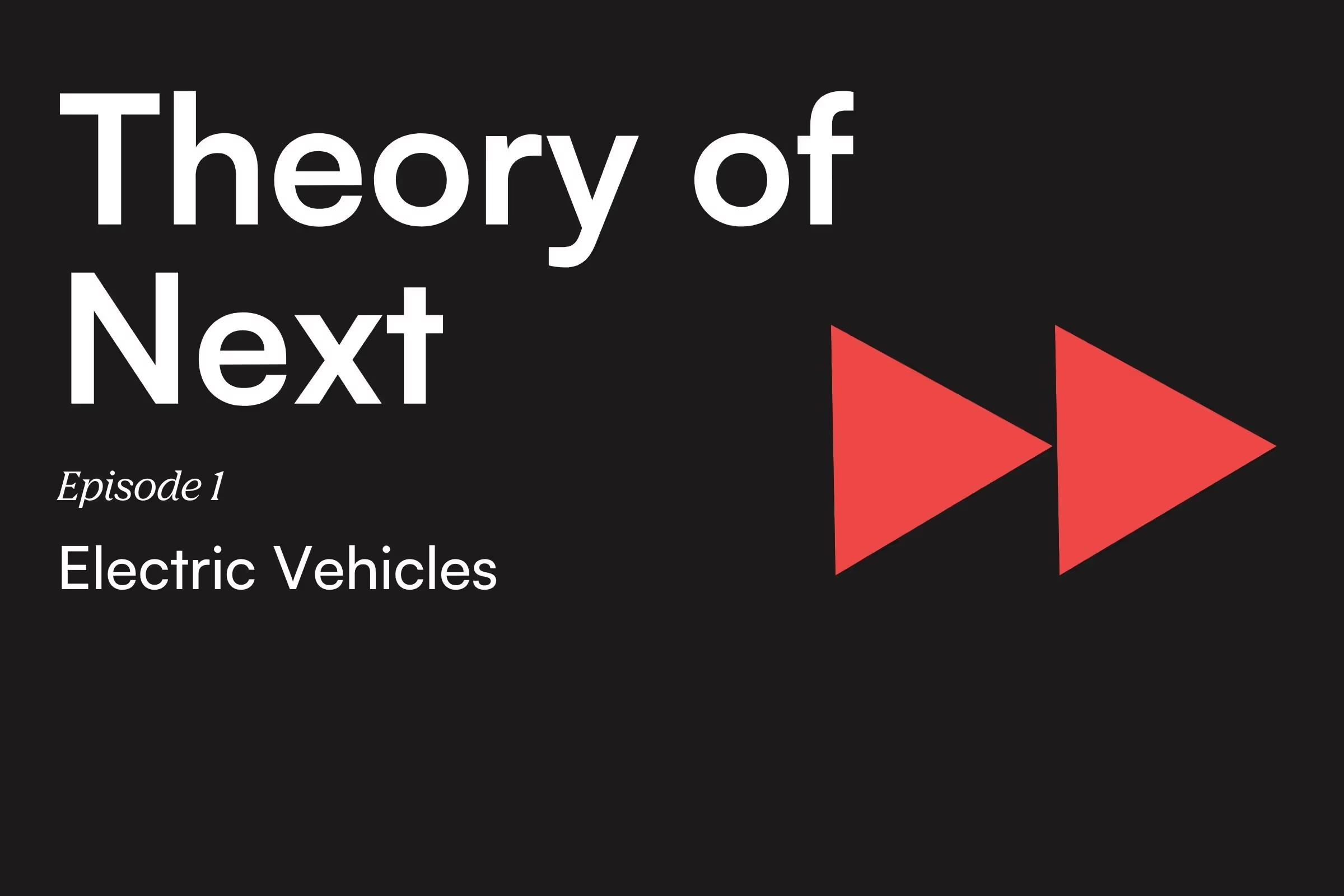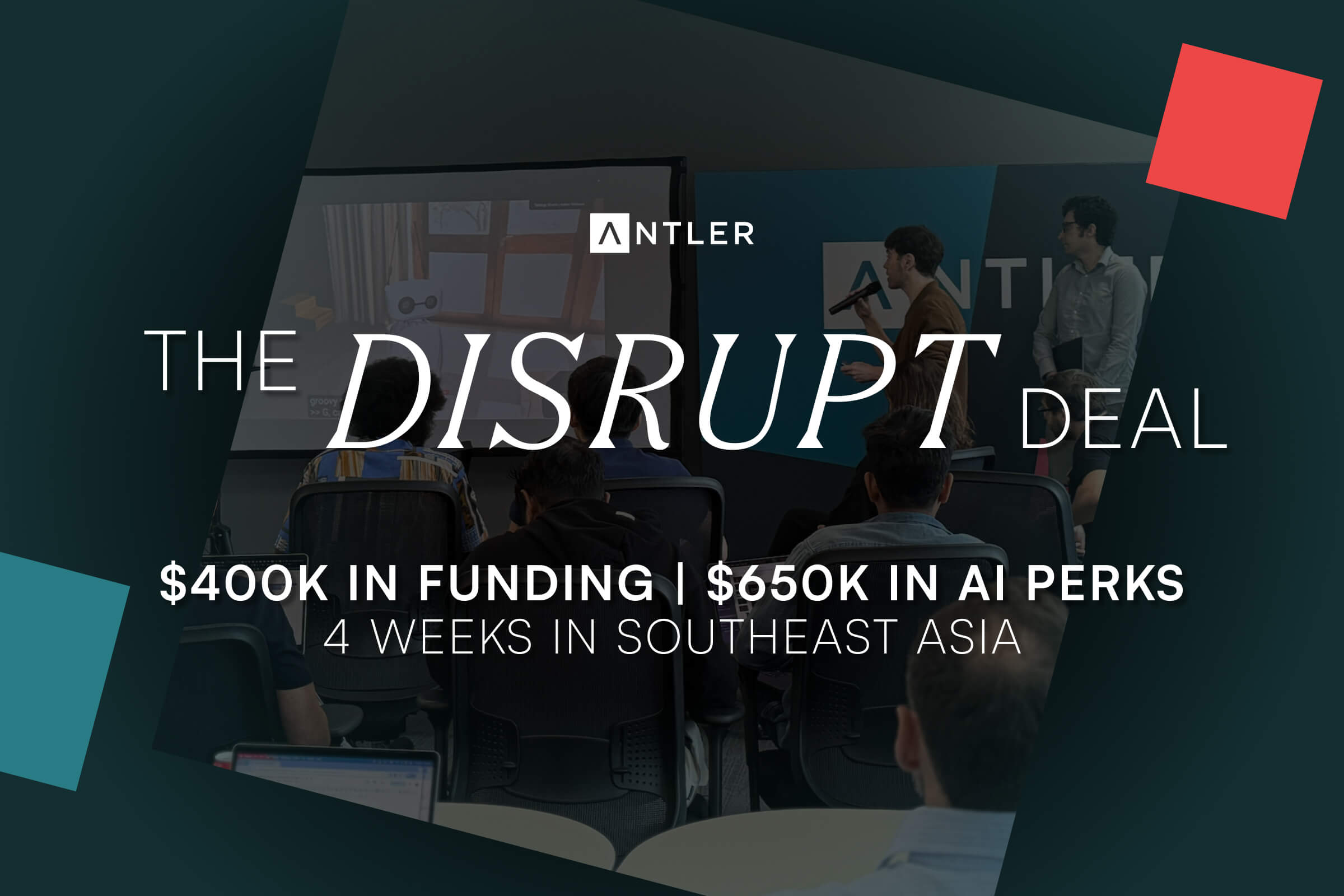Highlights From Transcript
[0:00] - Introduction
[3:36] - Zooming out: The EV Landscape & Value Chain
[5:42] - EVs are finally ready to take off!
[9:35] - Progress in Product Innovation
[13:24] - EVs are cheaper than ICE vehicles: A TCO Perspective
[18:56] - Notes on Charging Infrastructure
[24:49] - Legacy Players vs Startups - Who will win the race?
[26:48] - Areas of Opportunity
[31:19] - The Bottom Line - Key Takeaways and Thesis
[34:16] - Closing Notes
Transcript
Introduction
Nitin Sharma: Hi everyone, and welcome to Theory of Next. I am Nitin Sharma, Partner at Antler India. Antler is one of the world's fastest-growing early-stage startup investing platforms. We are in 17 geographies globally, and especially well-suited for founders building in India for the world. We go very early. The earlier the better. When things are purely concepts. And it is with that mindset that we always need to be at the cutting edge of what technologies, spaces, and themes are going to shape our future.
And so we thought let's create a new property that underlines this. So, welcome to Theory of Next.
So you might be wondering, "What's unique about this Theory of Next?" Well, we asked ourselves the same question. And one thing we learned after having talked to so many hundreds and thousands of founders and would-be founders, is that the process by which a venture firm or a team arrives at a thesis is quite opaque.
So we asked ourselves, "Can we build this in public and lay bare the process of discussion, debate, and the deep research that leads to a team crystallizing a thesis around a new space or a new idea?" And so that's what we are going to expose to the whole world in this process. So we're excited to cover a lot of spaces and ideas starting with areas that we have deep experience and a deep passion for. Web3, the Metaverse, DAOs, NFTs, Crypto in general, Climate change, Electric Vehicles, Mental Wellness, and so on.
We will try to do this with a first-principles approach using building blocks to systematically build the case for why we should or should not invest in something. And so this will be approachable even if you're new to this space or theme.
And then for those who want to dive in deeper, we will have a long-form thesis piece out for public consumption as well. So we hope you will enjoy it. Welcome to Theory of Next. Let's dive in.
Climate change is the biggest challenge of our generation. And every time oil prices spike or climate change is debated, EVs, electric vehicles are inevitably mentioned as a huge part of that solution. We have several new companies entering the space every day. The EV value chain has become very well-defined. There are massive companies like Tesla reaching trillion-dollar valuations. And yet, somehow it feels they've not achieved their potential. That's our topic for today. Is this a case of slowly, then suddenly?
Let's dive in.
Hi guys, so let's get started. In this series, we're going to go into Web 3, NFTs, and a lot of things in Crypto. But the first topic we want to start with is Electric Vehicles - EV. And, this is as much of a chance for me to learn as it is for you because one of the things we want to do with this series is to expose the internal thinking inside a VC firm.
And how some of our younger investors are actually domain experts. So it gives me immense pleasure to introduce Vineet, who is our go-to guy for EV and has tremendous insights and prior experience having worked at Ola specifically focusing on this topic. So, Vineet, why don't we start with your introduction?
Vineet Agarwal: Thanks, Nitin. Hi everyone. I'm Vineet Agarwal. I manage India investments for Antler. Prior to joining Antler, I spent time in the corporate development team at Ola, and also, previously spent some time in the investment banking division of Goldman Sachs. While at Ola, I did a lot of work on the electric vehicle ecosystem specifically around fundraising strategy and M&A, and was closely involved in Ola Electric's acquisition of Etergo, which was a Netherlands-based electric scooter company.
Zooming out: The EV Landscape & Value Chain
Nitin Sharma: Okay, Vineet so, I think everyone is aware of vehicles, right? But let's actually take a nuanced view of what the value chain and the landscape looks like. So first things first, especially for those who are new to the space, how do we break it down?
Vineet Agarwal: On the vehicle, the landscape is essentially how the vehicle is built.
So there's lithium. And then, lithium is used to create cells. Multiple of these cells are then used to create a battery pack. The battery along with a few other components essentially creates the vehicle. So this is the entire vehicle landscape.
Nitin Sharma: Like solar [power] had cells and modules.
Vineet Agarwal: Exactly, exactly. The same as that.
Now, for the whole ecosystem to exist, you need a lot of non-vehicle-related things, right? Broadly five of them. First is, Service and Distribution Network. In order for the vehicle to sell, you'll have to create a distribution network and after-sales service requires a service network. So that is number one.
Second is Charging and Swapping Infrastructure. So we have to set up that infrastructure that can support and power those vehicles. Third is the Grid in itself - what supplies energy to the charging stations or to the swapping infrastructure. Now, unfortunately, today, most of the grid is still reliant on coal, but over time we will see more technologies around solar, renewable energy, for instance.
Beyond that, you know, the other two categories. One is more, an ancillary, which is essentially Financing. Today, it has not been completely solved for, but, financing is a massive opportunity, especially given the price difference - upfront cost is higher for an EV versus that for an ICE counterpart. The final opportunity is not here and now it's more of a long-term, over the next four or five years, but Battery Recycling and Reusability.
Just to give you some stats, a battery becomes unusable on an EV at 80% of its capacity, but the battery is still at 80% of its capacity. Right? So there are other alternative use cases, for example, plain and simple energy storage.
EVs are finally ready to take off!
Nitin Sharma: You know the question as to why a VC should look at it. One big impediment has been, this is a very capital-intensive play. But beyond that also, in a way, this market has not actually taken off, right? When did Reva [launch]? Was it what? 15, 20 years ago?
Vineet Agarwal: More than 20 years ago.
Nitin Sharma: Right. And so what's our penetration in the market today? 1%?
Vineet Agarwal: Yeah. So, we are currently at less than 1% of vehicles sold in India is an electric vehicle today. To be precise, it's at about 0.8% of all vehicles sold in India.
Nitin Sharma: Tesla's been around for a long time, right? Why hasn't this market taken off?
Vineet Agarwal: I would say broadly, there are three reasons.
First and foremost is the lack of product innovation. A person does not buy a Tesla because he wants to buy an electric vehicle. A person buys a Tesla because he wants to buy a Tesla. And what makes Tesla what it is, it is the product. So the key reason for the limited adoption of an electric vehicle is the product.
Second is pricing [parity].
Nitin Sharma: By product, you really are talking about the connectedness of the device and the coolness of the ownership.
Vineet Agarwal: So two things. One is the practicality of the vehicle in itself. And second is usability and features and the premiumness of that vehicle. So it's a combination of both of them. Second reason is pricing parity [with respect to ICE Vehicles]. India is a value-conscious market. As much as people in India aspire to buy a vehicle, they’re still value conscious. So pricing parity really is very important.
And third is the lack of charging infrastructure. Everybody talks about it. We don't think it's the key reason, but it is a really important reason. Yes, it's a chicken and egg problem. As more and more EVs start coming into the market, that problem would be solved over time.
But as of now, there is limited adoption of charging infrastructure. Charging, or swapping infrastructure. That is a key reason why there has been limited adoption.
Nitin Sharma: Okay. So PPC - Product, Pricing, Charging. Those are the building blocks of our thesis. All right. So this is the future, according to you?
Vineet Agarwal: It's not the future because it is here and now. It's a reality.
Nitin Sharma: So you believe there is something about this time, this phase we are in that, you know, as Antler India, our team should really get deep into this.
Vineet Agarwal: Rather than getting into qualitative reasons, let me give you some quantitative reasons. Let me give you some stats.
If you remember, Ola electric launched the Ola scooter and called for booking for two days. They reported sales of ₹1100 Crores in just two days. Which broadly implies around 85,000 to 1,00,000 vehicles sold in just two days. Now mind you, one lakh vehicles on a base of six lakh vehicles on the road today, and this six lakh has been built over time.
So what people have bought over the last four or five years is six lakh [vehicles] and in only two days are people buying one lakh scooters. Yeah. There is a fundamental shift.
Nitin Sharma: Yeah, that reminds me of all of the things in VC, which are always slowly then suddenly. So you are saying the market is taking off.
Vineet Agarwal: It has taken off. Yeah, so it's not the future anymore. It's an opportunity here & now. It is on us whether we want to take it or not.
Nitin Sharma: Okay. Well, let's just recap for everyone. Right. So 1% penetration right now.
Vineet Agarwal: Yes. Less than 1%.
Nitin Sharma: Yes, less than 1%. Only 6 lakh vehicles. Two-wheelers, four-wheelers, what's the split?
Vineet Agarwal: Most of the penetration today is in the three-wheeler category for various reasons.
Two-wheelers is the second, but I think two-wheelers is a category that is going to see mass adoption going forward because of a variety of reasons. Most importantly, pricing parity. Four-wheelers have had some penetration, but the least of all the categories. The primary reason is that four-wheelers demand much more performance.
Four-wheeler category demands much more range. As a result of which, there is a huge pricing gap between a four-wheeler ICE vehicle and a four-wheeler electric vehicle. Which is why it still does not make sense.
Nitin Sharma: Make sense. Three-wheelers, two-wheelers, and four-wheelers, that’s really the evolution then.
Progress in Product Innovation
Nitin Sharma: So let's start going through each one of the three things you mentioned, right. Product. So what exactly is changing? What is key?
Vineet Agarwal: So I'll actually take an example to explain what has changed. Thirteen years back, I bought my first Honda Activa. Back then, the Activa was priced at ₹45,000. Fuel was 45 rupee a liter.
My father thought it was very expensive and suggested I buy an electric vehicle instead, back then. This was 13 years back and electric vehicles still existed back then. We had a few Chinese companies that used to import and sell it in India. Now, back then, when I was a teenager turning into an adult, I had to make a choice and I ask you to make that choice today.
If I give you an option to buy a vehicle, the top speed of which is 30 kilometers per hour, and the range is 50 [kilometers], it does not look good, Nitin, would you buy that vehicle? And the Activa was ₹45,000, this was like ₹35,000. It was cheaper.
Nitin Sharma: Of course, not.
Vineet Agarwal: If I tell you that, Nitin, you are spending, let's say ₹80,000 to buy an Activa today, versus, if you spend like, say ₹1,00,000, you get a scooter, electric scooter, all sustainable, looks very good. It looks very premium. You can actually control it on a mobile app. Would you be willing to pay that ₹20,000 extra with the top speed of let's say 80 kilometers or 90 kilometers an hour, a much bigger range?
Nitin Sharma: No, I get your point. The baselines are being met. So something like the connected device element of it becomes far more interesting. Yeah.
Vineet Agarwal: So broadly two fundamental changes in the product that have happened now versus, you know, what was there earlier. One is practicality. Indian consumers, like we discussed, are value conscious. They want a practical product. Practicality includes pricing and range. The range has to be decent enough to do an intracity commute on a scooter, inter-city commute on a vehicle. It has been solved to a large extent because of battery chemistry, you know, much larger batteries, improvements, and so on.
Nitin Sharma: What’s changed there?
Vineet Agarwal: So in the battery chemistry, there are actually two things. One is the pricing of the battery. Lithium has gone down. So, just to give you some stats, lithium today is actually 98% cheaper than what it was three decades back.
And, by the way, 90% of this reduction has actually happened only in the last one decade. So that is the kind of change that has happened in the lithium-ion prices, which has reduced battery prices drastically. Now to give you another stat,
Nitin Sharma: Is this lithium commodity price or manufacturing economies of scale?
Vineet Agarwal: It's the commodity price. And we are not factoring in, you know, battery manufacturing, scale. So it's primarily the cost of lithium. So the ion itself has come down and obviously, there are economies of scale that add to the overall price. Now a battery forms between 25% to 40% of a vehicle's cost.
So imagine a 90% reduction in that cost has significantly dropped that vehicle price. So that is one practical change. One change on the practicality side. Second, the battery chemistry has fundamentally changed. So if you look at the chemistry today, it is, we call it NMC. So nickel, manganese, and cobalt. We used to have a very high share of cobalt, which we are slowly, gradually reducing.
And we’re actually on the verge of adding aluminum on that chemistry as a different metal, which reduces the weight. And we are then able to pack much more power inside the same battery pack. So you do not increase the size. You actually reduce the weight. And the battery can give you much better output.
Nitin Sharma: The point that you're making is, despite these advances being in the future, what is already there is good enough. It is becoming mainstream.
Vineet Agarwal: Yes. And a lot has changed for us to get here, but a lot is changing for us to go do a quantum leap.
Nitin Sharma: And that's what creates a VC opportunity.
EVs are cheaper than ICE vehicles: A TCO Perspective
Nitin Sharma: Okay. So that's super on product. Next thing, pricing.
Vineet Agarwal: Yep.
Nitin Sharma: So, I mean, what has changed dramatically? The initial cost? or the lifetime cost of ownership? How does one think about that?
Vineet Agarwal: So like you said Nitin, there are two ways to think about pricing. One is the Upfront Cost, the money you have to pay to buy that vehicle.
Second is the Total Cost of Ownership, the industry calls it TCO. It is essentially the lifetime cost of running a vehicle. So, there has been a major change in the upfront cost. Having said that, the upfront cost of an EV is still at a premium.
Nitin Sharma: What is it?
Vineet Agarwal: So it actually gets more pronounced as the vehicle form factor increases.
So for a two-wheeler today, the price difference between an ICE vehicle and the EV counterpart will be anywhere up to a 20% kind of a premium. EV's at a 20% kind of a premium. But when we look at a car, it is actually at about 50% premium. That's because it requires a much larger battery and hence a much larger cost. You know, the pricing has come down, but it's still at a premium. For a scooter, it still makes sense. A car is still some time away.
Nitin Sharma: We know Indians are value conscious. Even that 20%.
Vineet Agarwal: Yes.
Nitin Sharma: It's significant unless I guess you're saying you go into the Total Lifetime Cost.
Vineet Agarwal: So the lifetime cost, so a consumer should not look at the Upfront Cost. Just the Upfront Cost in silo. He should look at the upfront cost and the Total Cost of Ownership. I will show you how the math works.
Nitin Sharma: Ya, let’s go through that.
Vineet Agarwal: So, broadly you know, TCO has three components. One is
the Upfront Cost of the vehicle. Second is what is the Running Cost. How much do I spend on running the vehicle over time. And the final is the Resale Value. End of the life of the vehicle, when I sell it, what do I get. The price of an electric vehicle today, like I said, let's talk about the TCO for a two-wheeler, for the sake of this discussion. The price of an electric two-wheeler today is at about 20% premium to its ICE counterpart.
If you look at maintenance costs, this is what actually changes the game in favor of an electric scooter. Running costs can be broadly categorised into two. One is the Fuel or Charging Cost. Second is the Maintenance Cost. The key differentiator is the fuel or charging cost. In an electric vehicle, your cost of charging is at about 15 to 20% that of the cost of fuel on an IC vehicle.
I'm just talking about a scooter, obviously economics change as the form factor changes,
but for a scooter, you pay 15% over the lifetime of the vehicle of what you would otherwise pay on fuel. And by the way, this just factors in, let's say fuel at hundred rupees a liter, and all of us know that it is increasing on a daily basis. Right? So as the fuel prices go on increasing this delta actually keeps on increasing further. On the maintenance side, because of the lower number of moving parts, and, you know, the engine has the maximum number of moving parts.
We've removed the engine from the vehicle and replaced it with one pack. One battery pack. The maintenance cost for an electric vehicle is actually about 30 to 40% cheaper than it is for an IC counterpart.
Nitin Sharma: And what does that mean for, let's say I have a scooter, what does that look like per month?
Vineet Agarwal: So per month, let's say, I think per month would not be the right way to look at it.
Like, let's say if you ride, let's say 50,000 kilometers, for instance, over the lifetime of the vehicle. So five years, 50,000 kilometers. If you do the math, whatever we spend on fuel we spend... so actually the fuel costs are almost equal to the vehicle price. So let's say if you've paid about ₹85,000 for an Activa, you'll pay up to ₹85,000 to ₹1,00,000 for the fuel itself. If you were to take an electric vehicle, it is essentially around 15 to 20,000 [rupees].
Nitin Sharma: Sorry, say that again. So if 15 to 20,000 [rupees] is the cost of the fuel, which is in this case, just electricity for the, for what period?
Vineet Agarwal: For 5 years, 50,000 kilometers.
Nitin Sharma: Okay.
Vineet Agarwal: So time is not that relevant. It's actually the number of kilometers. So 50,000 kilometers would require, let's say about, about ₹20,000 to be spent on charging.
Whereas if it was a petrol vehicle, you would actually spend about ₹85,000 to ₹1,00,000 on the fuel.
Nitin Sharma: And the customers have started understanding.
Vineet Agarwal: Exactly. Exactly. And then comes maintenance. So because of less number of moving parts, you spend less on maintenance. You save about 30 to 40% as of now. With economies of scale, as more and more mechanics come into service, the gap will widen even further.
And then the final thing is Resale Value. Now, this is where EVs have a problem. Today, as of date, we've not doubled down or we've not narrowed down on what is the use case or what is the resale value going to be like. Which is one of the reasons why banks are not yet ready to finance an electric vehicle that easily.
Nitin Sharma: So how do we sum up the TCO difference? Initial, 15-20% higher, TCO is?
Vineet Agarwal: Yep. So the TCO for an electric vehicle, an electric scooter, would actually be 50% cheaper.
Nitin Sharma: 50% cheaper!
Vineet Agarwal: 50% cheaper over the life of the vehicle. And this is where I'm actually assuming a lower resale value for an electric vehicle. Even if you assume a lower resale value for an electric vehicle and a premium pricing, the TCO [is lesser for an EV].
Nitin Sharma: Despite the fact that electricity, in a global sense, [is cheaper and] electricity in India is more expensive than other places.
Vineet Agarwal: Exactly.
Notes on Charging Infrastructure
Nitin Sharma: Okay. So we've discussed Product and Pricing. Let's talk about Charging now. So, what's the state of affairs? And what is changing in Charging?
Vineet Agarwal: In India, we actually have less than 2000 charging stations. For about six lakh electric vehicles that are there on the road today. So the density is, you know, abysmal.
We need to do a lot of work on the density. The good thing is,
Nitin Sharma: Is there a tipping point? If you look at other countries, the US, China, of course, they have very different landscapes and geographies. But, is there a tipping point after which the proposition becomes strong for people that see charging stations and the market takes off?
Vineet Agarwal: So, you know, like everyone in the industry says, and I do agree that it is true, this is a chicken and egg problem.
Setting up charging infra or swapping infra is a CapEx-heavy business. So, it's a serious business. You have to put a lot of money into it. It only makes sense once there is a critical mass of vehicles on the road. Unfortunately, today we do not have that critical mass on the road for anyone to invest in it meaningfully. Having said that, with the kind of traction we're seeing on the vehicle side and vehicle sales side, there have been a lot of companies, both on the government side and on the private side who are now setting up charging infra. We've heard news from big companies like Reliance who are going all-in into energy infrastructure set up. Companies like Tata Power who have already been there in the market are expanding their focus.
Global companies like ABB, for example, have come into the market now and are looking to expand their focus. The fundamental shift, all of this, whatever we've seen, whatever I've spoken about is adding on and getting more excited in the market, right? The fundamental shift is a change in the business model.
If you look at historically, automotives were a vertical-focused business. They were not full-stack. They only manufactured and distributed the vehicle right. Today, automotives are going full-stack. Companies are saying, "I will manufacture a vehicle. I will set up charging infra. I will set up financing services." And all of that.
So, that is what will lead to initial adoption. Over time, I think OEMs will again start verticalizing and rather than doing a full-stack kind of an approach, but today a full-stack approach is required to get to that critical mass.
Nitin Sharma: So when you say 2000 charging stations, I mean, doesn't that suggest, this is the bottleneck, this is the key, right?
And most of the market will, it seems to me, or when we meet startups, they talk about sort of new approaches to charging. So this seems to be the key, but I don't think you, you don't agree with that. You think it's still the product.
Vineet Agarwal: Yes. So I don't think charging is the number one reason. It is not a constraint, right?
People know that charging infra would be set up over time and people have the option of charging it at home. Right? I mean the '2000' is just the public charging stations. And to clarify, each of these stations might actually have multiple charging guns. So, if it is, let's say 2000 charging stations, on average, let's say if there are two guns per charging station, that actually means 4,000 vehicles that can be charged at any point of time, right? This is just public charging infra. If you look at charging, the potential to charge in people's houses, it's much more than the vehicles sold in the country. So I don't think it is a problem. And I'll back that with stats. Again, I’ll use the same example like Ola, right? This whole, like, say about a lakh of vehicles in these two days.
Do you think there has been a charging infra addition in those two days? No, right? The number of charging infra is still the same.
Nitin Sharma: Good point.
Vineet Agarwal: But, people have bought that vehicle.
Nitin Sharma: Is it viable? This charging infrastructure as a business model, right? For those who are setting up specific types of plugs, et cetera. Is there enough money to be made in charging? Will that itself take care of it, or will that separately need government subsidies?
Vineet Agarwal: As of now, it does not work. The unit economics does not work because see, I mean, this is a specific business model problem. So, for you to set up charging infra, it only makes sense when you set it up in high density.
Right now the unit economics for charging does not work. The reason is that you know, for charging business to be meaningful, it has to be at a higher density. So like we have petrol pumps today, multiple petrol pumps in the same city. We have to have that kind of infrastructure, that kind of density to support electric vehicles.
Nowadays, there are a very limited number of vehicles on the road that can use this charging infra. Which is why even if you set it up, there will be limited demand. And demand will mostly be in, you know, peak time cycles, for example, late at night, early in the morning. But, over time as you know, more and more vehicles start coming on the road, that's when it becomes a viable business.
It is CapEx heavy. It would require an initial investment. But I don't think, again, subsidies are not really required.
Nitin Sharma: If I look at a VC model, again, it is CapEx heavy but the product part is even more CapEx heavy. So I would assume that we should be looking into certain areas to play. And there's of course plug-in charging and battery swapping. So which one makes more sense for us?
Vineet Agarwal: I think on charging versus swapping, right? The end-use is the same. These are two very different ways of, you know, powering the vehicle. From a long-term perspective, swapping is what works best because you know, it has multiple benefits for a consumer. You don't have to wait for like, say three hours to charge a vehicle.
You can just walk in, swap the battery in less than five minutes, and walk out. That's how seamless it is. But today, swapping is much more CapEx heavy than charging is, right? Just because it's cheaper, OEMs find it, and charging infra setup providers find it easier to set up a charging infrastructure. And there are concerns around the standardization of a battery, which is required for effective swapping, which today does not exist.
So charging is the short-term and medium-term opportunity. In the long term, I think swapping should be the way forward.
Legacy Players vs Startups - Who will win the race?
Nitin Sharma: Okay. So Vineet, I think you've made a very compelling case about economies of scale, downward pricing curves. And why does that actually still make sense from a VC perspective, but let me push a little bit more, right? Still, this is a big capital game and you have large OEMs both the new generation ones focused on EVs, but also the entire industry of legacy OEMs, right? And we're seeing that they are the investors in this space and they will obviously control the value chain to quite a large extent. What's in it for startups? Is it really that exciting?
Vineet Agarwal: To answer your question on the incumbents, like every other industry incumbents will be slow to react because they anyway have their own problems to deal with.
But if you see the very unique thing about incumbents in this space is, unlike a lot of other spaces, incumbents have, some of them have actually started reacting. Companies like TVS, Bajaj, for example, have come up with products. Some of them are commercially sold today. So you can actually buy a TVS iQube today, right?
Now having said that, I think over the long-term, automotives is an oligopoly business, right? You will not have 15 manufacturers manufacturing. We'll have those, let's say top five, seven, or 10 manufacturing across the world. So consolidation has to happen. It will happen over time. You know, either it's through M&A or it's through JVs, but the market will consolidate.
It is either larger incumbents acquiring some of the new age players or larger new-age players acquiring some of those even smaller ones. So broadly, that is how consolidation will happen. And companies have already started sowing seeds for the same. For example, Hero Moto Corp has an investment in Ather. TVS has an investment in Ultraviolet Automotive. So a lot of seeds have already been sown over time, you know, these will materialize in a much bigger way.
Areas of Opportunity
Nitin Sharma: I think beyond the academic or intellectual part, right? I mean, our bread and butter is what does it mean for founders? Right? So let's try to zoom in on that. There are founders watching this, listening, where are the opportunities for founders?
Vineet Agarwal: So, you know, a lot of people think that with OEMs going full-stack, there's not enough opportunity out there in the landscape to innovate. Automotives, by the way, is like 7% of India's GDP. So, it's a very large, massive sector and it impacts a lot of other sectors and the same thing is going to happen with electric vehicles. So, the electric vehicle opportunity is not just a Mobility opportunity. It is also a FinTech, it's also an EdTech opportunity.
Nitin Sharma: Good point.
Vineet Agarwal: It's also a larger Climate Tech opportunity, right?
If you look at, let's say, FinTech, Embedded Insurance, Embedded Finance, things like Personalized Insurance, that is a very big opportunity. Because these are connected vehicles, you can actually use telematics data to personalize insurance requirements, personalize finance requirements.
Nitin Sharma: Which could happen without EVs as well with that Metromile in the US for example. And it just makes far more sense with EVs.
Vineet Agarwal: Just because you know, the products today are much more connected, so it's easier for you to underwrite. It's easier for you to build those product layers on top of it.
So it is a FinTech opportunity. It is also an EdTech opportunity, specifically around up-skilling mechanics. Now, like I said you know, today's service requirements for an EV are not that much, right? Because there are lesser number of moving parts.
Nitin Sharma: Is that venture scale?
Vineet Agarwal: That is venture scale because you look at the number of mechanics in India today across the length and breadth, most of the work on an IC vehicle is actually mechanical. Versus, an electric vehicle would need more electrical work. So you have to up-skill these people. Now, how do you venture scale? Upskilling is just one part of it. You can upskill them, then keep on adding layers of, you know, B2B supplies or, you know, just continuous learning and development.
Also lending to mechanics, helping them set up infrastructure, standardization, branding, setting up SOPs. It's an entire ecosystem. But specifically, if you look at the Ed-Tech part of it is up-skilling of mechanics, it's a huge market. And there is also potential for you to just go out there, acquire, let's say, a thousand garages, and then go to Hero Electric or any other OEMs and become an exclusive service center for them.
So you just get that ready access. That's on the EdTech side. Now, coming to the larger meta point around Mobility. There are multiple opportunities on the mobility side for anyone who wants to innovate. First and foremost, we'll talk about charging infrastructure or swapping infrastructure setup. Yes, it is CapEx intensive, but an entrepreneur's job is to innovate, right?
Can we come out with innovative solutions that solve for that CapEx intensity? That gives us the ability to set up charging infrastructure or swapping infrastructure at scale. That is something that we would be very interested in. Second is the overall battery and the battery management system. So can we come up with solutions that have better battery chemistry, better battery density, and give much better output in terms of power and energy while consuming fewer resources, right? And the overall battery management system in itself, can we do innovation there? So, that is the other opportunity. Third, I think this would probably be more interesting for a VC play - the software layer. Like we discussed, electric vehicles are connected, right? In most of the new-age electric vehicles today, you actually have the dashboard look like a tablet, right? So you can actually use it like it is your phone. Can companies build applications on top of it? Can companies build a software layer on top of it? So that is something that would really be interesting. And obviously like the standard, old general telematics, smart mobility kind of solution.
Nitin Sharma: It has been around for a while.
Vineet Agarwal: Yeah. It's been around for a while, but adoption has not been that much because there was not enough capability, both from the OEM side and the vehicle side to read and synthesize that data. They were generating it but were not able to understand it. Today, we are in a much better position to understand. And last and broadly, I think, on the mobility side, B2B or fleet use cases would be a very important use case going forward. Because of the higher upfront cost, companies would not like to buy these vehicles. So can we, you know, build systems around, let's say, mobility as a service? subscription? so on and so forth. More specifically targeted towards B2B use cases, fleet use cases. That will be very interesting.
Nitin Sharma: Yeah. Fleet management definitely changes a lot.
Vineet Agarwal: Yeah.
The Bottom Line - Key Takeaways and Thesis
Nitin Sharma: Okay, Vineet, this has been great. Now I just want to summarize for our audience, right. What our main takeaways are and what is the sharp thesis that we have. So let's start going through the points you made today. So number one - this is here and now.
Vineet Agarwal: Indeed. It's not the future. If we think of EVs as the future, we'll just lose the tide. So it is here and now. This is the time for us to get on the boat and, you know, back the best companies in this space.
Nitin Sharma: Okay. Number two, product is far more important. And charging is not the key constraint.
Vineet Agarwal: Yes. Everybody's been talking about charging and, you know, people have been saying that it's a chicken and egg problem. It's an easier answer. I really think, and it's been proven by companies, over the last four or five, six months, that product is key. What makes Tesla, what it is, is the product and not really, you know, charging, for instance.
Nitin Sharma: Number three, while it is here & now, it really is here and now for two-wheelers, not for four-wheelers.
Vineet Agarwal: Yes. Because four-wheelers still need to catch up in terms of both upfront costs and also TCO, because again, just to give you some thoughts and you know, also for the viewers to help them understand when they should look at buying a vehicle.
If you drive 10,000 kilometers and are looking to buy a two-wheeler, anything beyond let's say, a 10,000 kilometer run over the life of the vehicle is good. And you can go ahead and buy your electric two-wheeler. But if you are a four-wheeler consumer looking to buy a car, only buy an electric vehicle, as of now, given the current pricing, if your lifetime expected run is beyond a lakh. If you expect to drive below one lakh kilometers, as of date, it does not make sense. You would rather save the five, six lakhs additional that you're spending on that and drive a petrol vehicle. Obviously, I'm not putting sustainability as a factor here. If you want to be environmentally conscious, then obviously EVs is the only choice.
Nitin Sharma: Got it. Number four, charging for now swapping for later.
Vineet Agarwal: Yes, I think over time, both will co-exist. But here & now is charging. Swapping is still more of a long-term thing, but over time, at a steady state, both will co-exist.
Nitin Sharma: Number five. Legacy players versus startups.
Vineet Agarwal: Legacy players will catch up. It would still need them some time, but they've already started sowing seeds. And startups, there are enough opportunities for new companies, new entrepreneurs to start something in this space across various different spectrums. So, yes, you know, legacy players will catch up, and startups, there's a lot to be innovated on.
Nitin Sharma: And number six in our thesis is that there are four interesting areas of FinTech opportunities, the EdTech opportunities, the Mobility, and the B2B opportunities.
Vineet Agarwal: Absolutely.
Nitin Sharma: Got it. All right. Well, let's go find some companies to fund.
Vineet Agarwal: For sure, we are already talking to a few of them actually.
Nitin Sharma: Alright, let's not disclose that.
Closing Notes
Nitin Sharma: That was awesome. I learned a lot and I certainly think that we should be very active in this space and I hope a lot of founders reaching out will reach out. And I think that we have a longer piece that will flesh out this entire thesis. For anybody listening, do watch out for our longer thesis piece where we go into much more detail on each of these aspects.
And I think this is the first episode of Theory of Next. We are going to go into lots of new exciting areas. Most eminently Crypto, Web3, DAOs, et cetera. But also over time, Climate change, SpaceTech, and a lot of other things. So hope you'll be with us for the next episode as well. Thank you.












